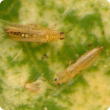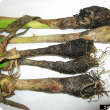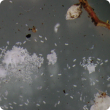Pests, weeds & diseases
Pests, weeds and diseases pose a serious risk for primary producers as they can impact on market access and agricultural production.
To reduce the impact of pests, weeds and diseases, the Department of Primary Industries and Regional Development:
- works with landholders, grower groups, community groups and biosecurity groups.
- provides diagnostic services and information on prevention, management and treatment.
- provides biosecurity and quarantine measures to prevent introduction, and to eradicate or manage current pests.
For advice on pests, weeds and diseases search our website, the Western Australian Organism List or contact our Pest and Disease Information Service (PaDIS).
For diagnostic services, please contact our Diagnostic Laboratory Services.
Filter by search
Filter by topic
- (-) Remove Horticulture filter Horticulture
- Crops (66) Apply Crops filter
- (-) Remove Vegetables filter Vegetables
- Pests (39) Apply Pests filter
- Potatoes (36) Apply Potatoes filter
- Diseases (29) Apply Diseases filter
- Pest insects (28) Apply Pest insects filter
- Biosecurity & quarantine (19) Apply Biosecurity & quarantine filter
- Biosecurity (19) Apply Biosecurity filter
- Plant biosecurity (18) Apply Plant biosecurity filter
- Cabbage (16) Apply Cabbage filter
- Fungi (10) Apply Fungi filter
- Cauliflower (9) Apply Cauliflower filter
- Chinese cabbage (8) Apply Chinese cabbage filter
- Carrots (8) Apply Carrots filter
- Tomatoes (8) Apply Tomatoes filter
- Brussels sprouts (8) Apply Brussels sprouts filter
- Broccoli (8) Apply Broccoli filter
- Viruses & virus-like (7) Apply Viruses & virus-like filter
- Nematodes (6) Apply Nematodes filter
- Fruit (6) Apply Fruit filter
- Bacteria (5) Apply Bacteria filter
- Crop diseases (5) Apply Crop diseases filter
- Nursery & cutflowers (4) Apply Nursery & cutflowers filter
- Grapes & wine (4) Apply Grapes & wine filter
- Capsicums and chillies (4) Apply Capsicums and chillies filter
- Swedes & turnips (3) Apply Swedes & turnips filter
- Production & postharvest (3) Apply Production & postharvest filter
- Onions (3) Apply Onions filter
- Livestock & animals (2) Apply Livestock & animals filter
- Mites & spiders (2) Apply Mites & spiders filter
- Kale (2) Apply Kale filter
- Garlic (2) Apply Garlic filter
- New horticulture crops (1) Apply New horticulture crops filter
- Livestock species (1) Apply Livestock species filter
- Livestock management (1) Apply Livestock management filter
- Olives (1) Apply Olives filter
- Parsnips (1) Apply Parsnips filter
- Lettuce (1) Apply Lettuce filter
- Postharvest (1) Apply Postharvest filter
- Pome fruit (1) Apply Pome fruit filter
- Breeding & varieties (1) Apply Breeding & varieties filter
- Bees (1) Apply Bees filter
- Beans (1) Apply Beans filter
- Beetroot (1) Apply Beetroot filter
- Canola (1) Apply Canola filter
- Grains (1) Apply Grains filter
- Citrus (1) Apply Citrus filter
- Leeks (1) Apply Leeks filter










